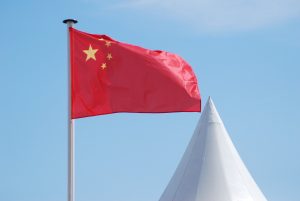On Wednesday, the Chinese People’s Liberation Army Navy (PLAN) began exercises in the South China Sea focused around amphibious assault activities. Prior to the exercises, a PLAN amphibious assault ship was seen at Woody Island, the largest natural Chinese-held feature in the South China Sea and host to major military facilities in the Paracel Islands.
The vessel, an apparent Type 071 amphibious transport dock, was seen in satellite imagery on June 27. According to ship tracking data, the ongoing exercises not only involved the PLAN, but also the China Coast Guard.
The exercises followed the announcement of a maritime exclusion zone southeast of China’s Hainan Island in the South China Sea by the Hainan Maritime Safety Administration (MSA).
The PLAN has carried out major military drills in waters off Hainan Island in the South China Sea regularly in the recent years and it normally announces maritime exclusion zones in doing so.
The apparent involvement of the China Coast Guard, a nominally civilian maritime law enforcement body, in naval drills comes as a novel development. It follows the approval of changes to the Chinese law governing the People’s Armed Police Force by the National People’s Congress’ Standing Committee earlier in June — the first such revisions in 11 years. The coast guard, as part of the People’s Armed Police Force, was deemed eligible to participate in wartime activities under the command of the Central Military Commission of China.
The China Coast Guard has been highly active in the South China Sea in recent years and has been involved in altercations with commercial ships and naval vessels from other countries, including territorial claimant states.
It’s unclear what kind of the role China Coast Guard vessels may be playing in amphibious exercises. The CCG does possess large displacement vessels that are comparable to small naval warships.
The South China Sea is a major strategic priority for China and it has significantly expanded the means by which it has asserted its claims to the disputed waters in recent years. Beginning in the mid-2010s, China constructed seven artificial islands in the Spratly group and the PLAN’s rapid naval modernization has been heavily focused on supporting a persistent presence in the South China Sea.
Apart from China, Brunei, Malaysia, the Philippines, Taiwan, and Vietnam claim territory in the South China Sea. Indonesia, while not a territorial claimant, is mired in a separate dispute with Beijing over part of its exclusive economic zone, which crosses Beijing’s so-called nine-dash line claim to almost the entirety of the South China Sea’s waters.

































